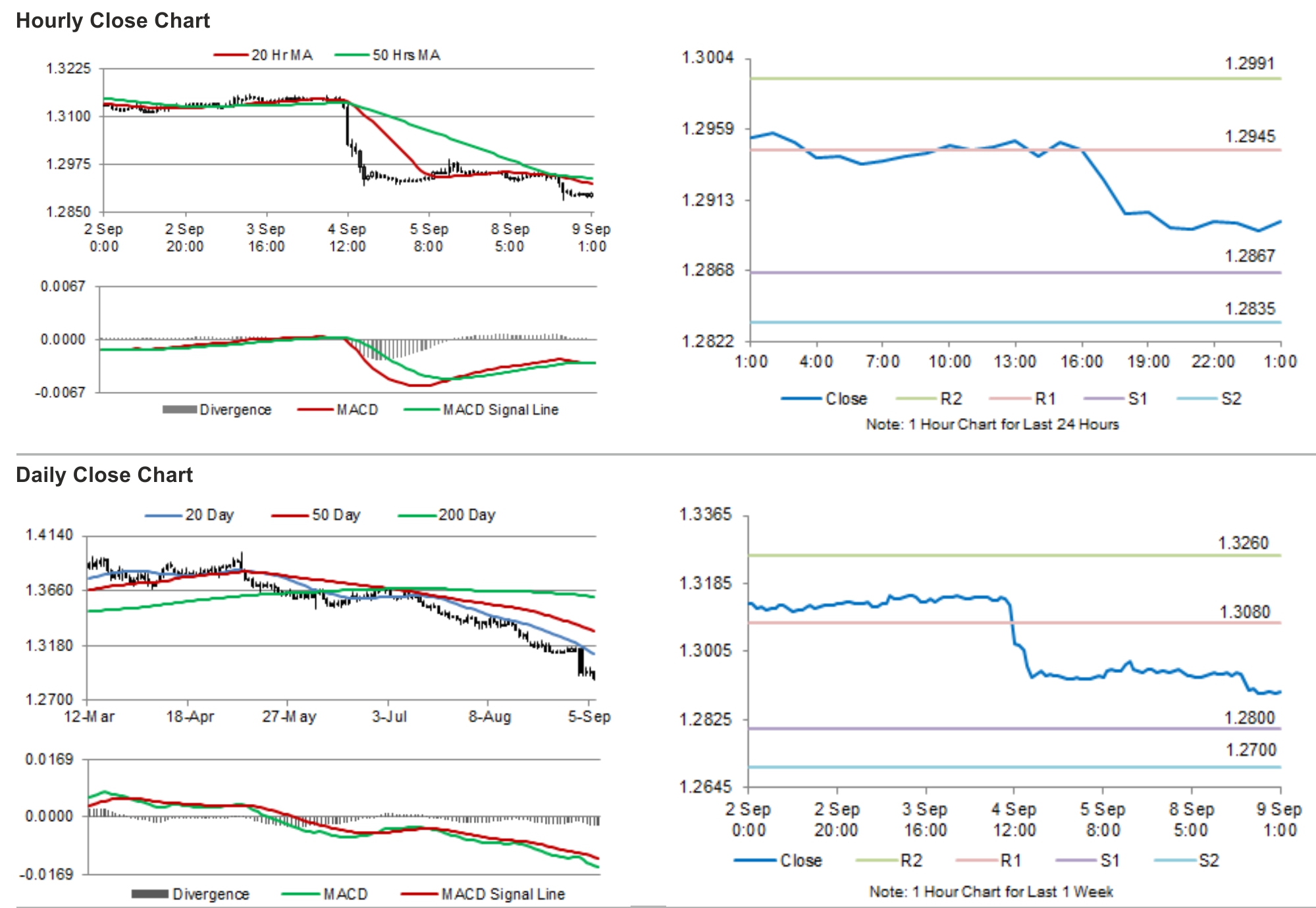For the 24 hours to 23:00 GMT, the EUR declined 0.43% against the USD and closed at 1.2898, as the Sentix investor confidence in the Euro-region deteriorated in September.
The investor confidence index in the Euro-zone recorded a drop to -9.8, lower than market expectations of a drop to a level of 1.4, following a level of 2.7 in the previous month.
In other economic news, German trade surplus widened to €22.2 billion in July, more than market expectations of €16.8 billion, and compared to a revised trade surplus of €16.6 billion in the previous month.
Yesterday, the ECB Executive Board Member, Sabine Lautenschlager, supported the recent decision of the ECB to cut its key interest rate, stating that it was necessary to prevent the risks of too low inflation and boost economic growth in the common currency bloc. Additionally, the ECB Governing Council Member, Ewald Nowotny, stated that the central bank’s recent measures to add more monetary stimulus in the Euro-region has weakened the Euro and will help exporters become more competitive.
Separately, the IMF Chief, Christine Lagarde, suggested that the weakening of the Euro against the USD in the past few days is a positive sign for “recovery” in the single-currency bloc.
In the US, consumer credit climbed by $26.0 billion in July, higher than market expectations for a rise of $17.0 billion and compared to $18.8 billion in the previous month.
In the Asian session, at GMT0300, the pair is trading at 1.2881, with the EUR trading 0.13% lower from yesterday’s close.
The pair is expected to find support at 1.2853, and a fall through could take it to the next support level of 1.2824. The pair is expected to find its first resistance at 1.2934, and a rise through could take it to the next resistance level of 1.2986.Amid a light economic calendar in the Euro-zone as well as in the US, trading trends in the pair today would be determined by global news.
The currency pair is trading below its 20 Hr and 50 Hr moving averages.

